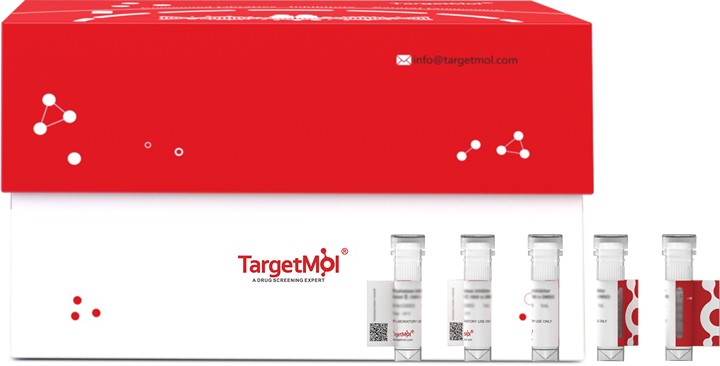- Remove All
 Your shopping cart is currently empty
Your shopping cart is currently empty
Acid Phosphatase/ACP1 Protein, Human, Recombinant (GST)
The low molecular weight phosphotyrosine phosphatase (LMW-PTP), also known as Acid phosphatase 1 (ACP1), belongs to the low molecular weight phosphotyrosine protein phosphatase family are involved in the regulation of important physiological functions, including stress resistance and synthesis of the polysaccharide capsule. ACP1/LMW-PTP is an enzyme involved in platelet-derived growth factor-induced mitogenesis and cytoskeleton rearrangement. LMW-PTP is able to specifically bind and dephosphorylate activated PDGF receptor, thus modulating PDGF-induced mitogenesis. In vitro, LMW-PTP was found to efficiently dephosphorylate activated FcgammaRIIA and LAT, but not Syk or phospholipase Cgamma2. The overexpression of LMW-PTP inhibited activation of Syk downstream of FcgammaRIIA and reduced intracellular Ca(2+) mobilization. It been demonstrated that LMW-PTP is responsible for FcgammaRIIA dephosphorylation, and is implicated in the down-regulation of cell activation mediated by this ITAM-bearing immunoreceptor. In addition, ACP1 is a highly polymorphic phosphatase that is especially abundant in the central nervous system and is known to be involved in several signal transduction pathways.

Acid Phosphatase/ACP1 Protein, Human, Recombinant (GST)
| Pack Size | Price | Availability | Quantity |
|---|---|---|---|
| 100 μg | $600 | 7-10 days |
Product Information
| Biological Activity | Measured by its ability to cleave a substrate, pNitrophenyl phosphate (pNPP). The specific activity is >65,000 pmol/min/μg. |
| Description | The low molecular weight phosphotyrosine phosphatase (LMW-PTP), also known as Acid phosphatase 1 (ACP1), belongs to the low molecular weight phosphotyrosine protein phosphatase family are involved in the regulation of important physiological functions, including stress resistance and synthesis of the polysaccharide capsule. ACP1/LMW-PTP is an enzyme involved in platelet-derived growth factor-induced mitogenesis and cytoskeleton rearrangement. LMW-PTP is able to specifically bind and dephosphorylate activated PDGF receptor, thus modulating PDGF-induced mitogenesis. In vitro, LMW-PTP was found to efficiently dephosphorylate activated FcgammaRIIA and LAT, but not Syk or phospholipase Cgamma2. The overexpression of LMW-PTP inhibited activation of Syk downstream of FcgammaRIIA and reduced intracellular Ca(2+) mobilization. It been demonstrated that LMW-PTP is responsible for FcgammaRIIA dephosphorylation, and is implicated in the down-regulation of cell activation mediated by this ITAM-bearing immunoreceptor. In addition, ACP1 is a highly polymorphic phosphatase that is especially abundant in the central nervous system and is known to be involved in several signal transduction pathways. |
| Species | Human |
| Expression System | E. coli |
| Tag | N-GST |
| Accession Number | AAI06012.1 |
| Synonyms | HAAP,acid phosphatase 1, soluble |
| Construction | A DNA sequence encoding human ACP1 (AAI06012.1) (Met 1-His 158) was fused with the GST tag at the N-terminus. Predicted N terminal: Met |
| Protein Purity | > 88 % as determined by SDS-PAGE |
| Molecular Weight | 44.3 kDa (predicted); 40 kDa (reducing conditions) |
| Endotoxin | Please contact us for more information. |
| Formulation | Lyophilized from a solution filtered through a 0.22 μm filter, containing 50 mM Tris, 150 mM NaCl, pH 8.0.Typically, a mixture containing 5% to 8% trehalose, mannitol, and 0.01% Tween 80 is incorporated as a protective agent before lyophilization. |
| Reconstitution | A Certificate of Analysis (CoA) containing reconstitution instructions is included with the products. Please refer to the CoA for detailed information. |
| Stability & Storage | It is recommended to store recombinant proteins at -20°C to -80°C for future use. Lyophilized powders can be stably stored for over 12 months, while liquid products can be stored for 6-12 months at -80°C. For reconstituted protein solutions, the solution can be stored at -20°C to -80°C for at least 3 months. Please avoid multiple freeze-thaw cycles and store products in aliquots. |
| Shipping | In general, Lyophilized powders are shipping with blue ice. |
| Research Background | The low molecular weight phosphotyrosine phosphatase (LMW-PTP), also known as Acid phosphatase 1 (ACP1), belongs to the low molecular weight phosphotyrosine protein phosphatase family are involved in the regulation of important physiological functions, including stress resistance and synthesis of the polysaccharide capsule. ACP1/LMW-PTP is an enzyme involved in platelet-derived growth factor-induced mitogenesis and cytoskeleton rearrangement. LMW-PTP is able to specifically bind and dephosphorylate activated PDGF receptor, thus modulating PDGF-induced mitogenesis. In vitro, LMW-PTP was found to efficiently dephosphorylate activated FcgammaRIIA and LAT, but not Syk or phospholipase Cgamma2. The overexpression of LMW-PTP inhibited activation of Syk downstream of FcgammaRIIA and reduced intracellular Ca(2+) mobilization. It been demonstrated that LMW-PTP is responsible for FcgammaRIIA dephosphorylation, and is implicated in the down-regulation of cell activation mediated by this ITAM-bearing immunoreceptor. In addition, ACP1 is a highly polymorphic phosphatase that is especially abundant in the central nervous system and is known to be involved in several signal transduction pathways. |
Dose Conversion
Sci Citations
Calculator
Tech Support

Copyright © 2015-2025 TargetMol Chemicals Inc. All Rights Reserved.


